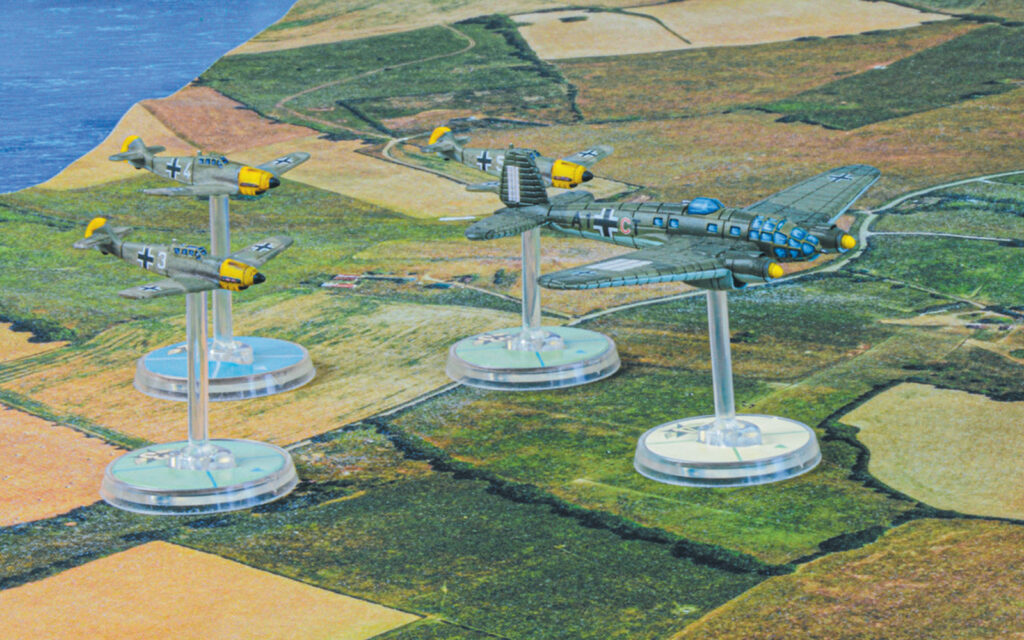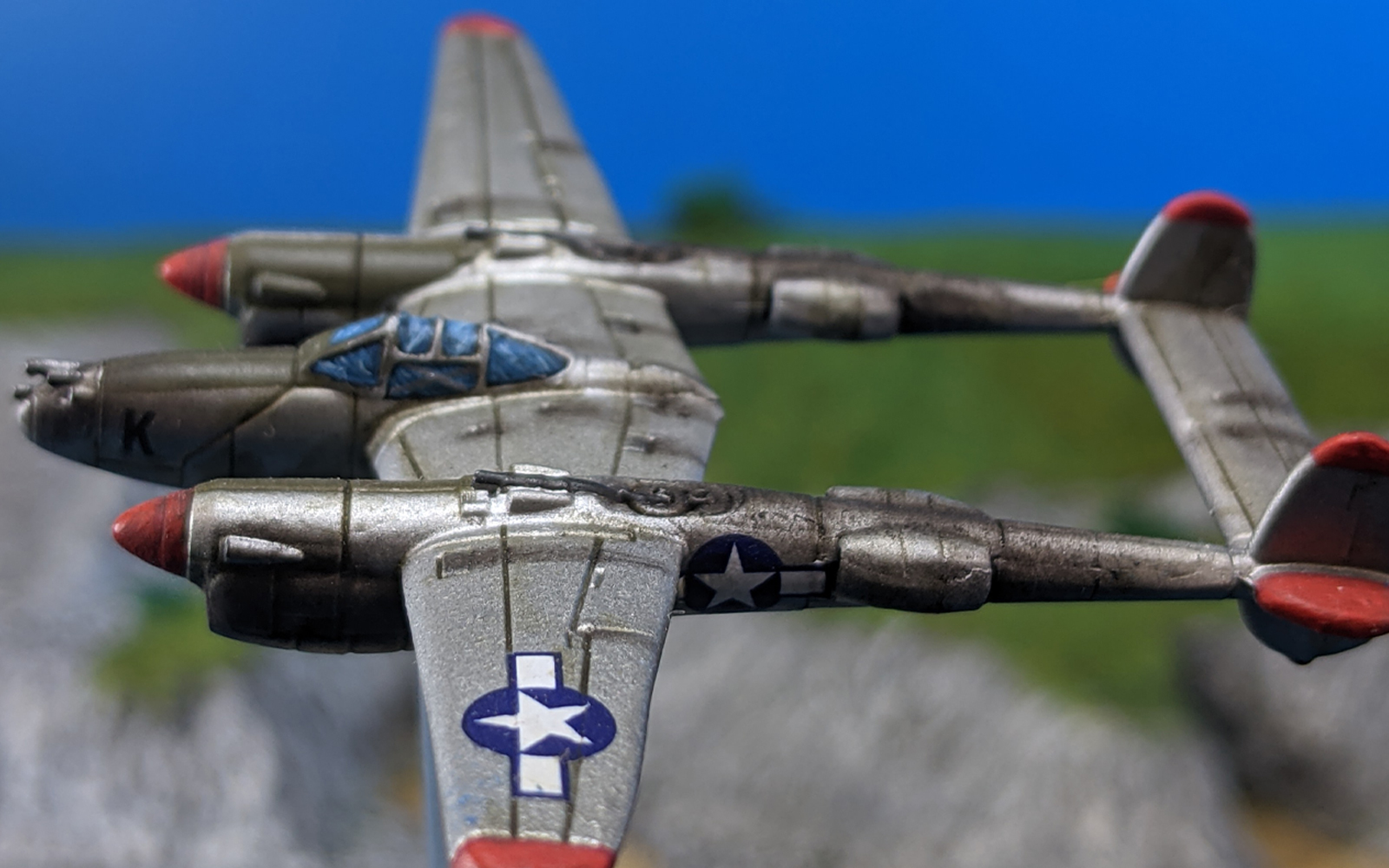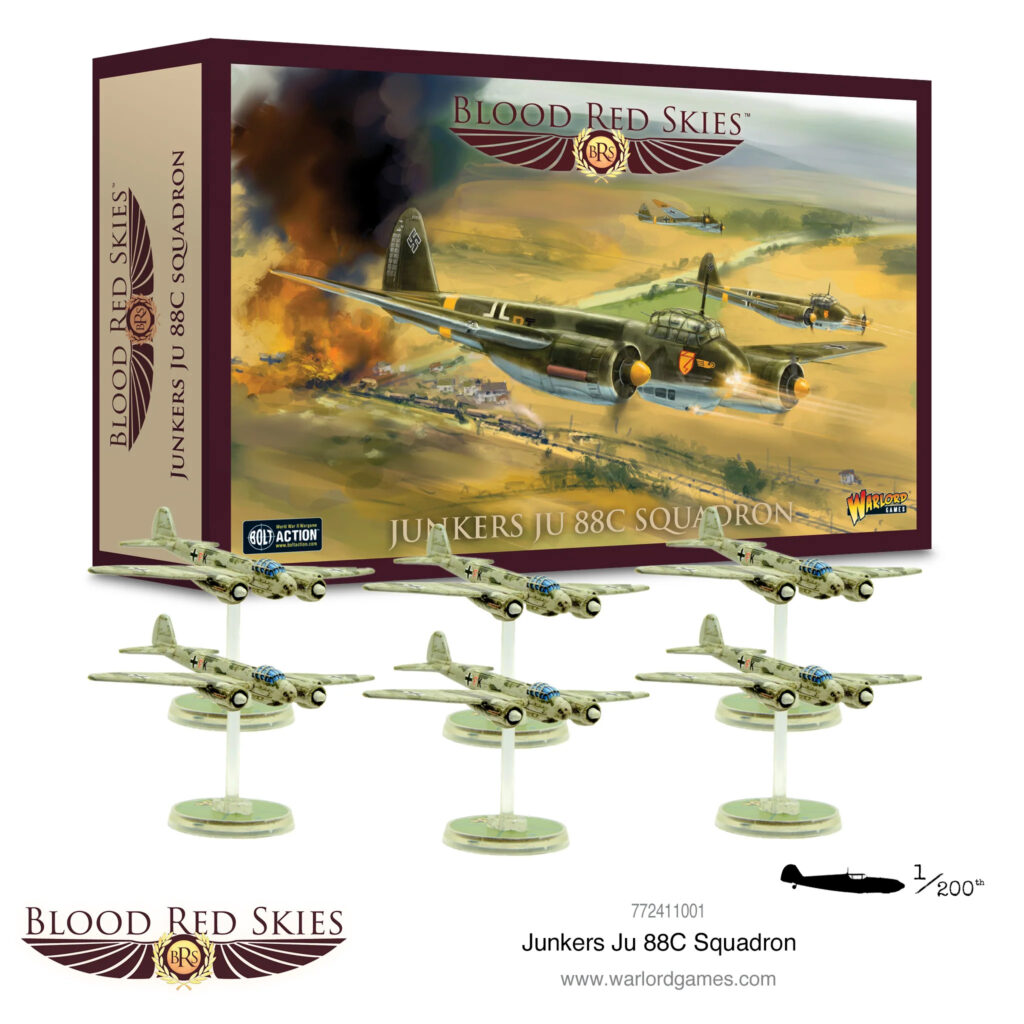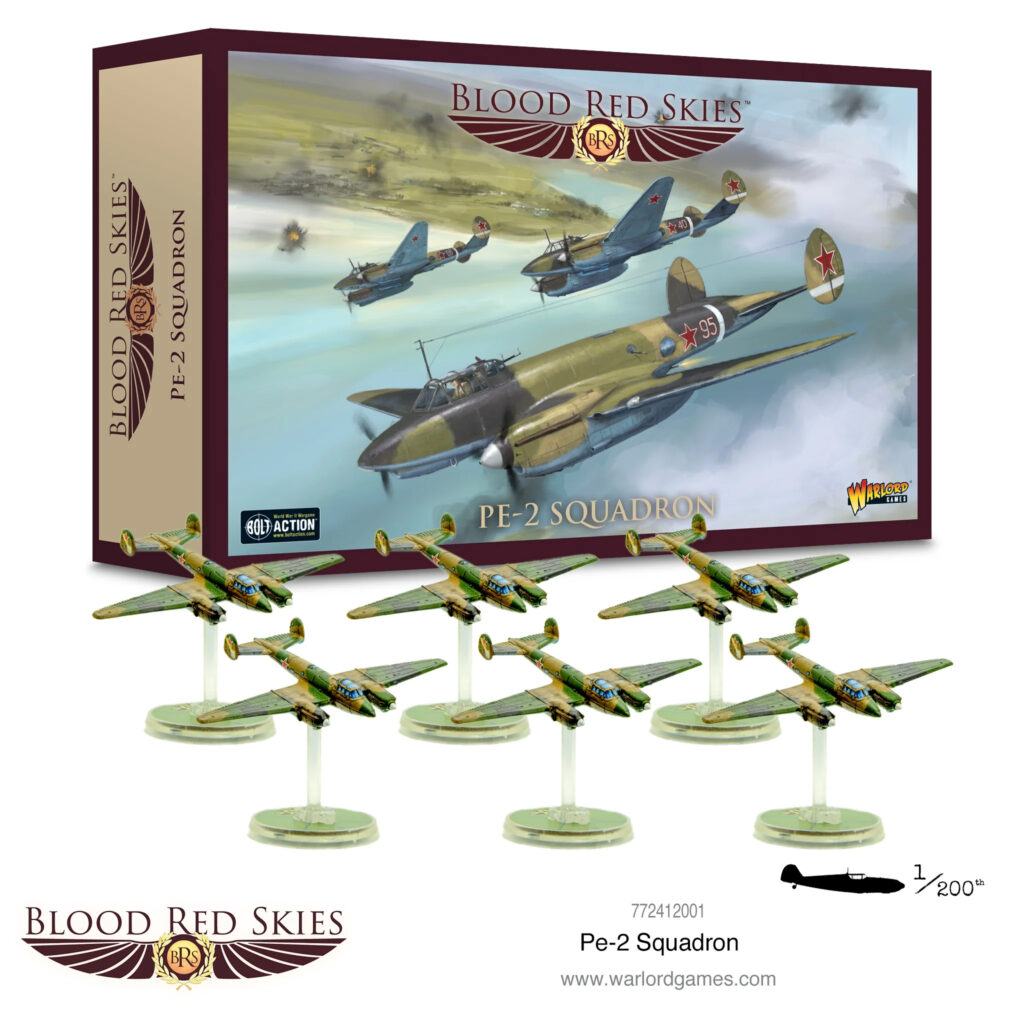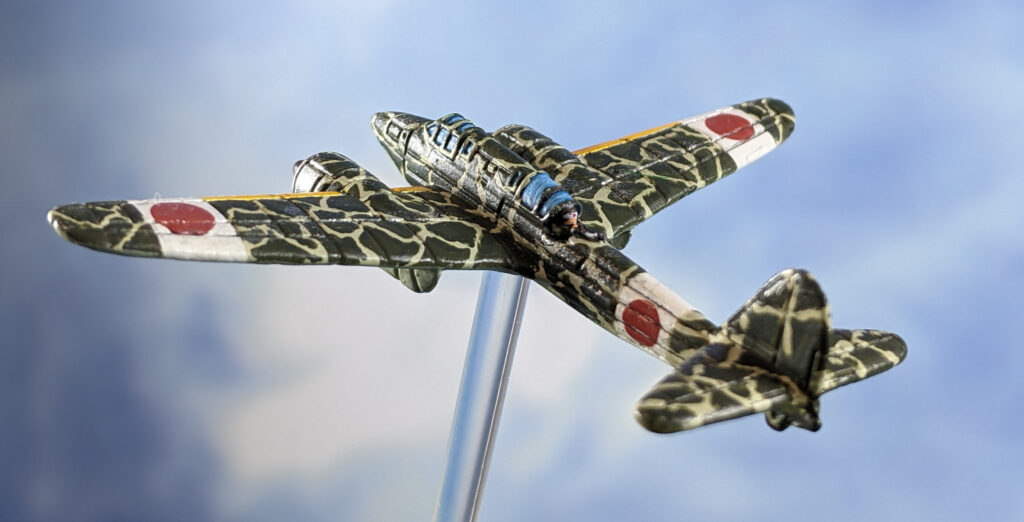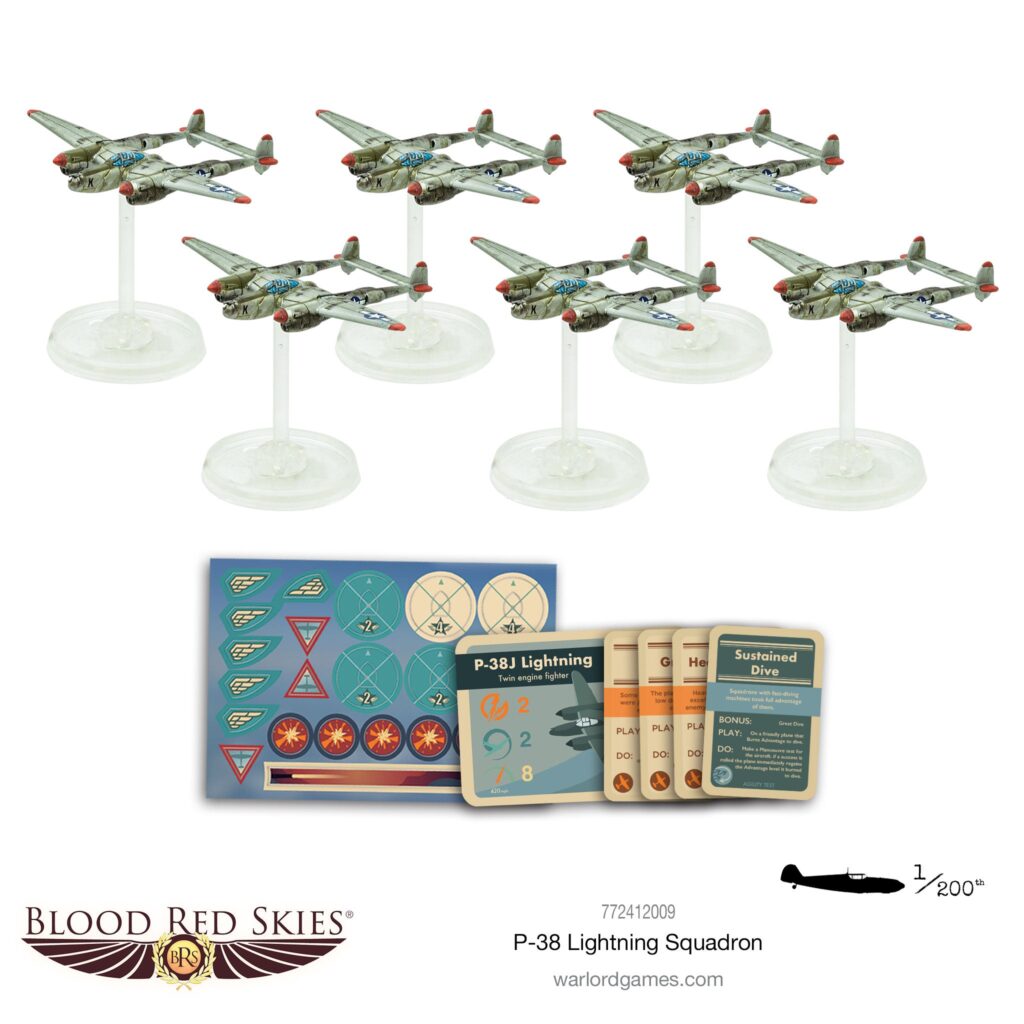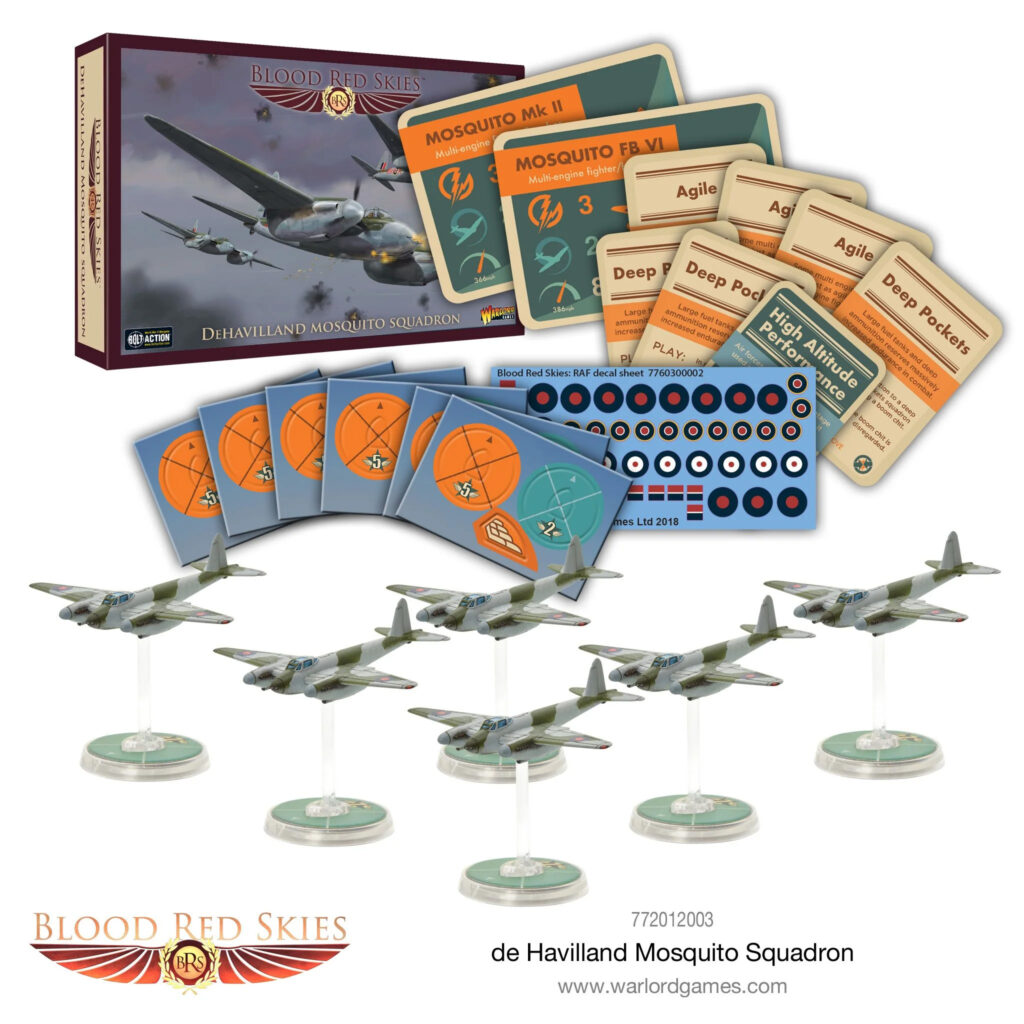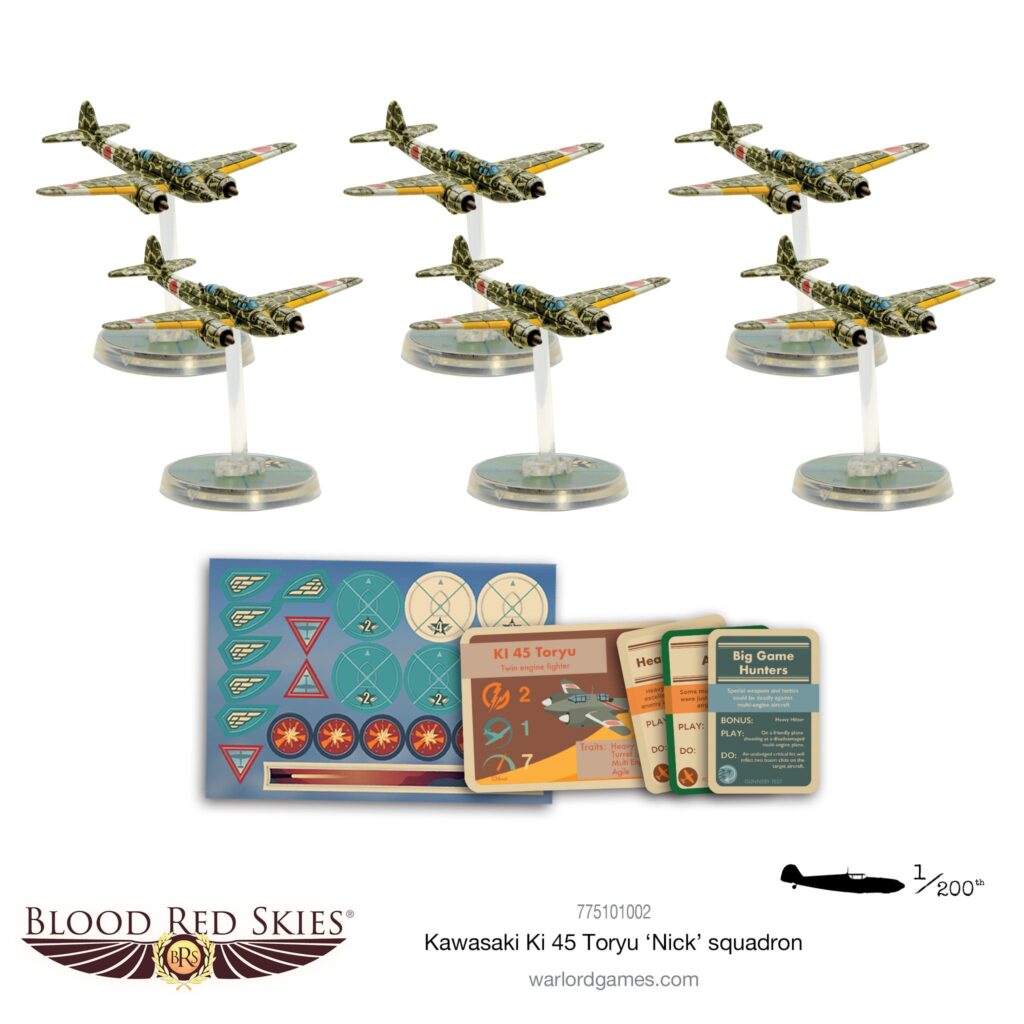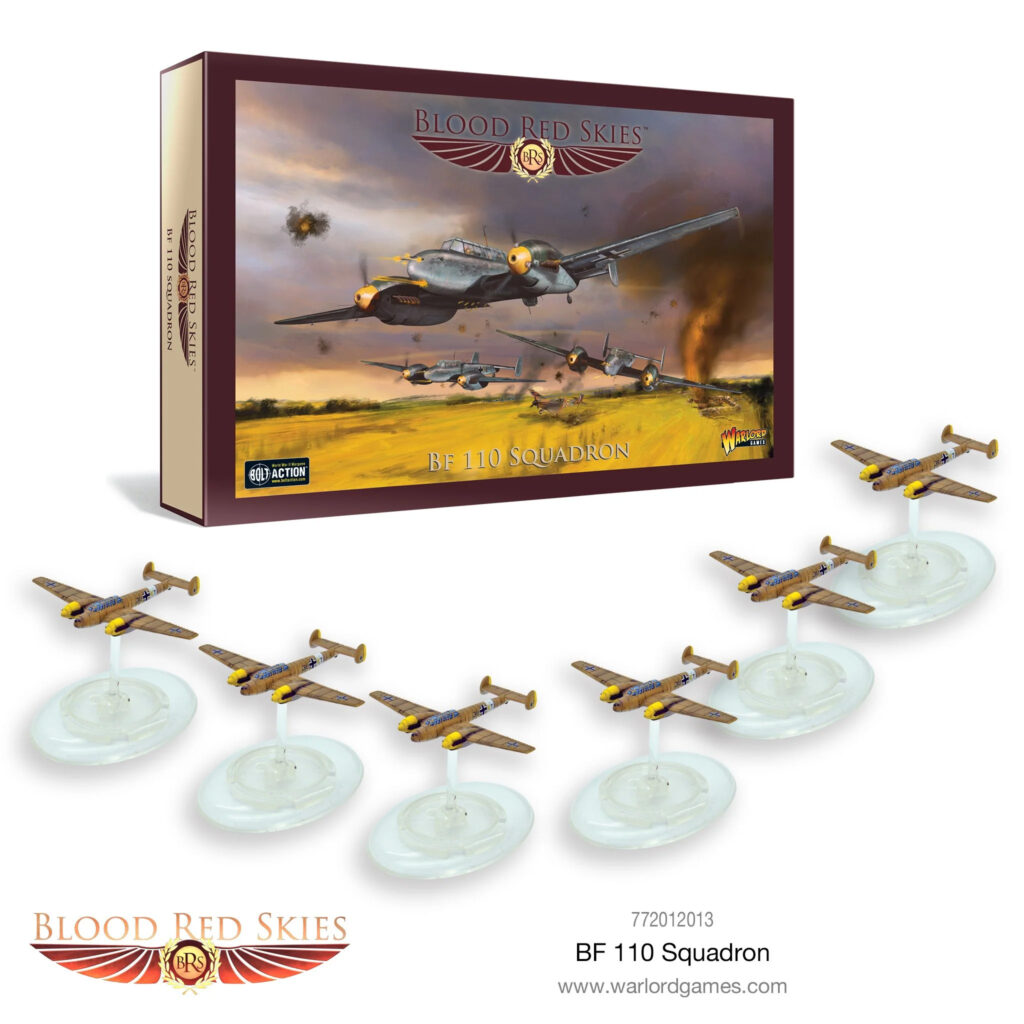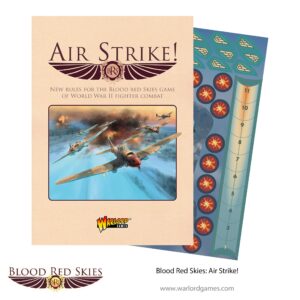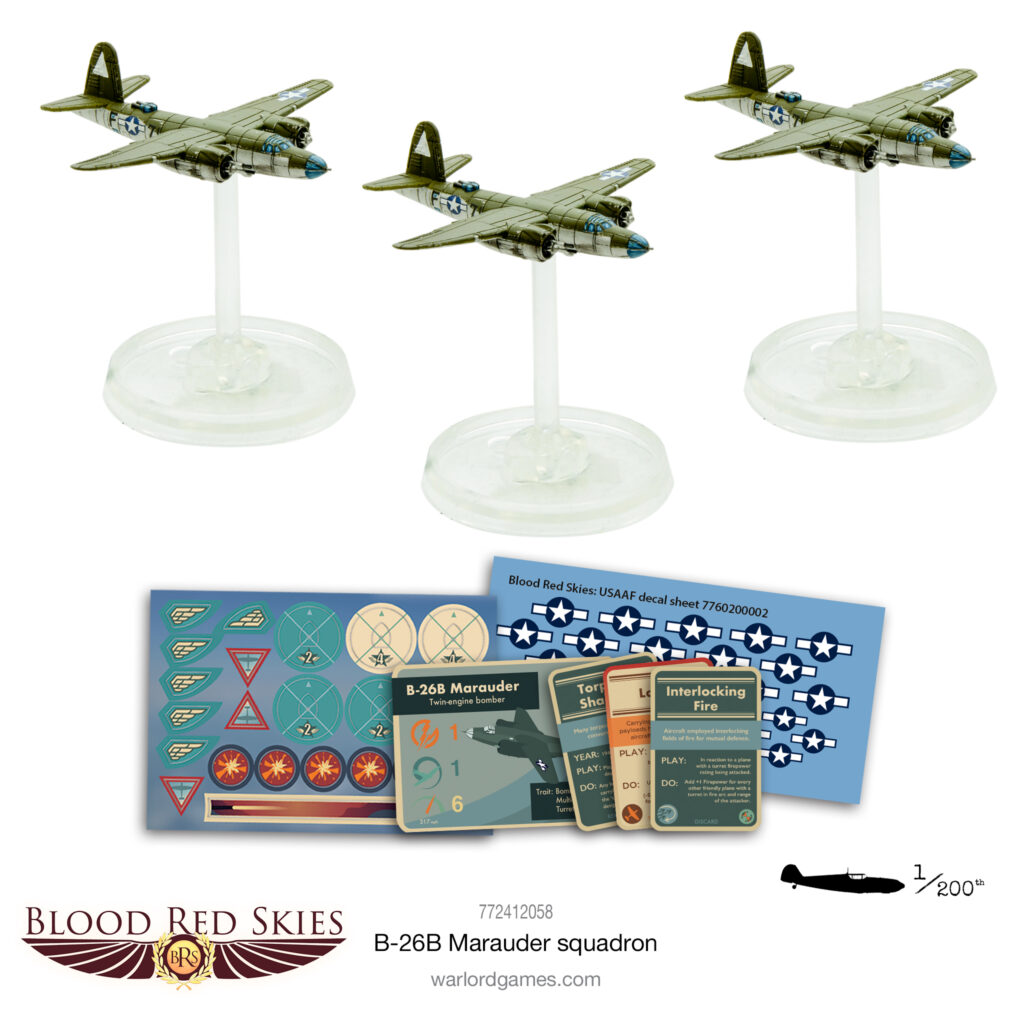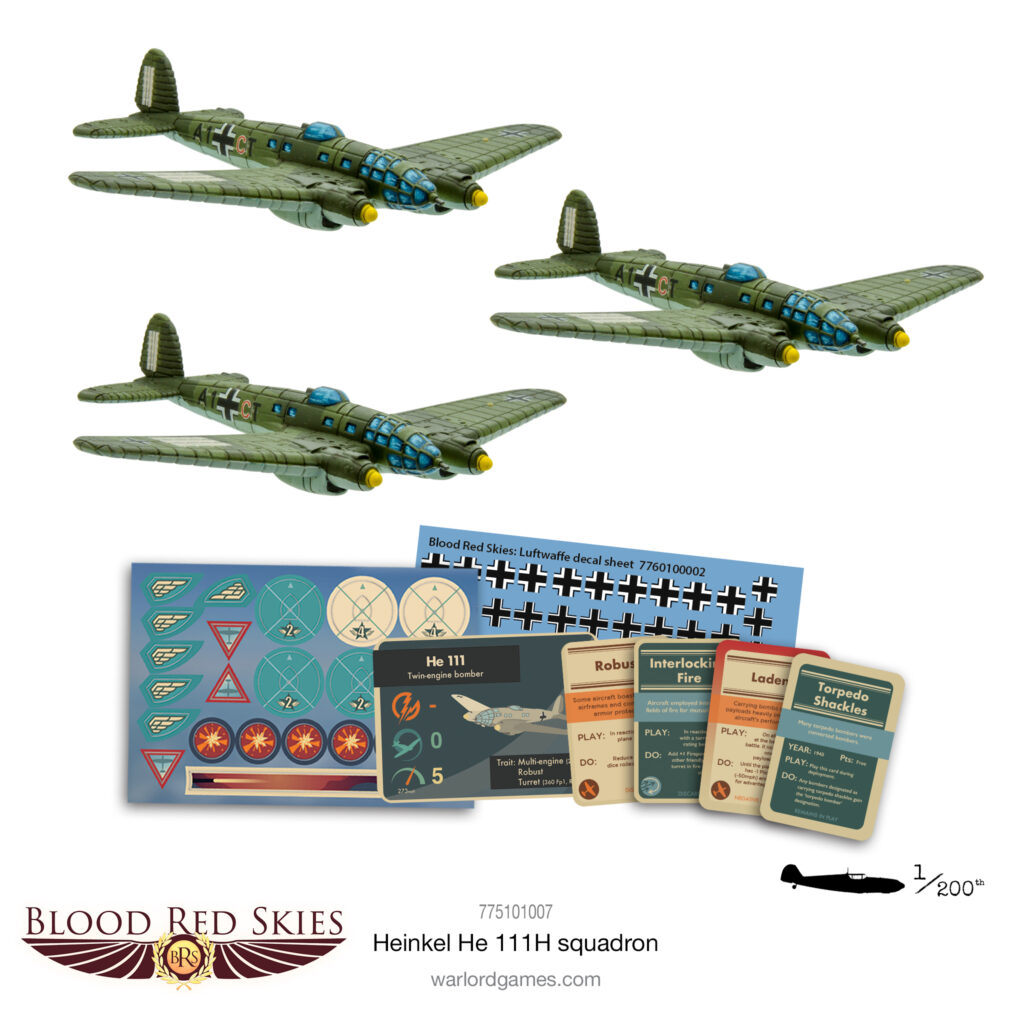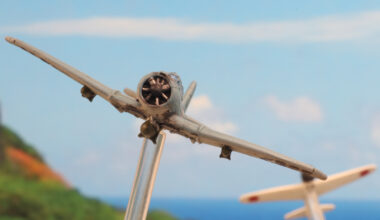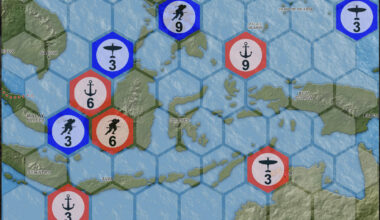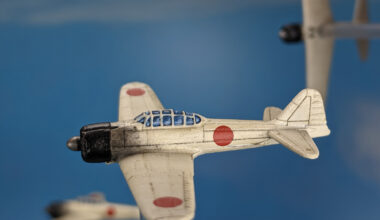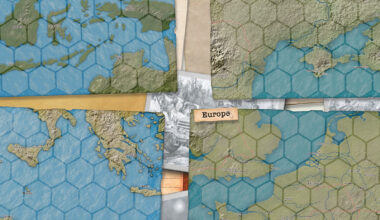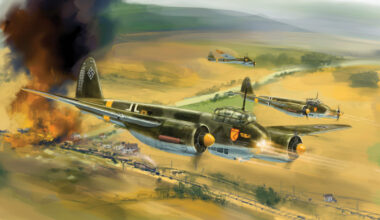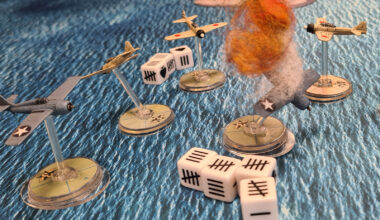Multi-engined aircraft have distinct advantages and disadvantages when compared to single-engined fighters, and are thus treated slightly differently within the medium of Blood Red Skies.
Whilst multi-engined planes could absorb more damage, carry more crew, fuel and ammunition (and certainly payload in the case of bombers), this could often come at the cost of the speed and agility of their single-engined brethren. As such the following rules are introduced when twin-engined aircraft are deployed on the table:
- Only multi-engined aircraft with the ‘Agile’ trait are able to perform, or have performed against them, the Outmanoevre action.
- Multi-engined aircraft may always be fired upon regardless of the shooter’s relative advantage level.
- Non ‘Agile’ multi-engined aircraft do not contribute their pilot skill when rolling to dodge a shooting attack.
- Boom chits are not scored on hits against multi-engine aircraft unless they are already disadvantaged. When a boom chit is scored it is placed on or near the aircraft to denote one engine is out. When there are boom chits equal to the aircraft’s total number of engines it is then shot down.
- Damaged multi-engine planes are subject to further negative effects – they may no longer be advantaged, and their speed diminishes.
Heavy Fighters
Heavy fighters can be operated slightly differently, should players agree. Though they can be played as above, noting that they tend to be ‘Agile’ aircraft, they can also be fielded, because their function is so similar to that of ordinary single-engined fighters, using the Heavy Fighters Optional rule. In this case they are treated as normal with one exception:
When a heavy fighter would normally be shot down it loses an engine instead as detailed in the multi-engined rules above. If a damaged heavy fighter is hit again and fails to dodge it is shot down, inflicting two boom chits (one for the hit and one for being shot down).
Air Strike!
For the full rules on fielding multi-engined aircraft, look no further than the Blood Red Skies rules compendium Air Strike!
This book presents all of the basic rules and adds many new ones suitable for expanded air operations including ground and sea targets, bombing, strafing and torpedo attacks, defensive flak and terrain. Jet aircraft are introduced via MiG Alley! and there is additional guidance for historic and competitive play.
The book includes seven scenarios for Blood Red Skies and re-presents the five original ones to bring them in line with the latest player feedback.
